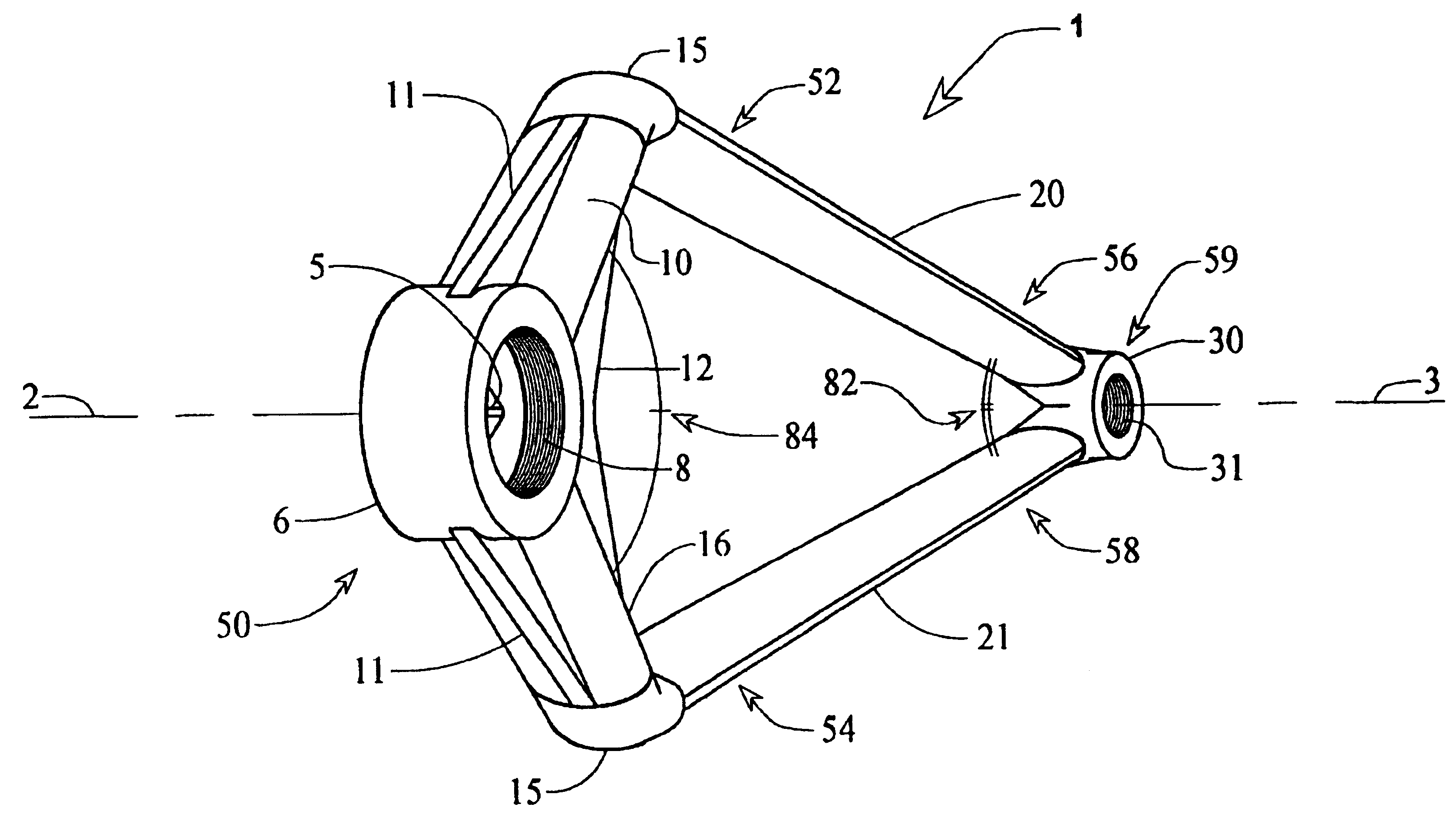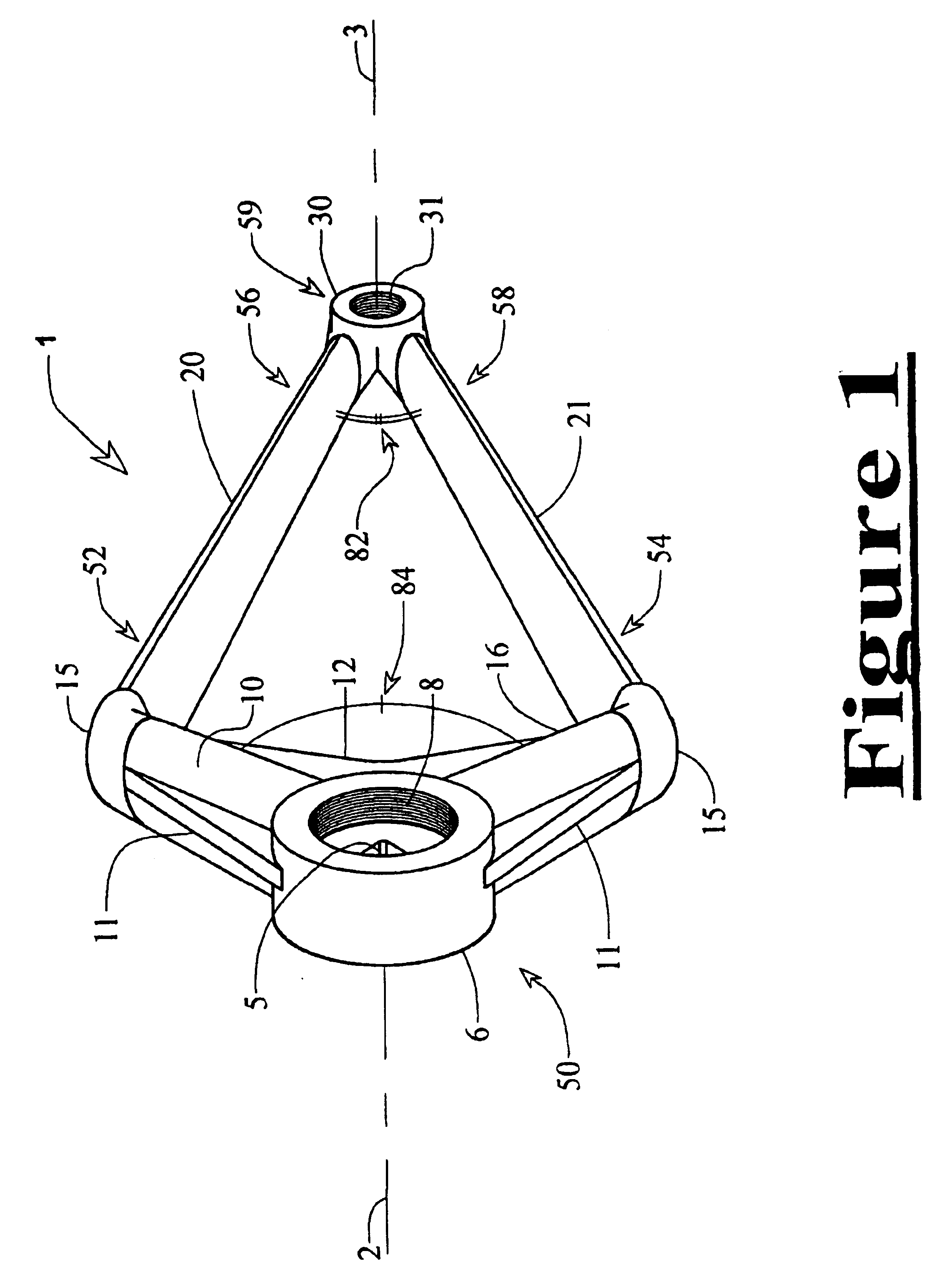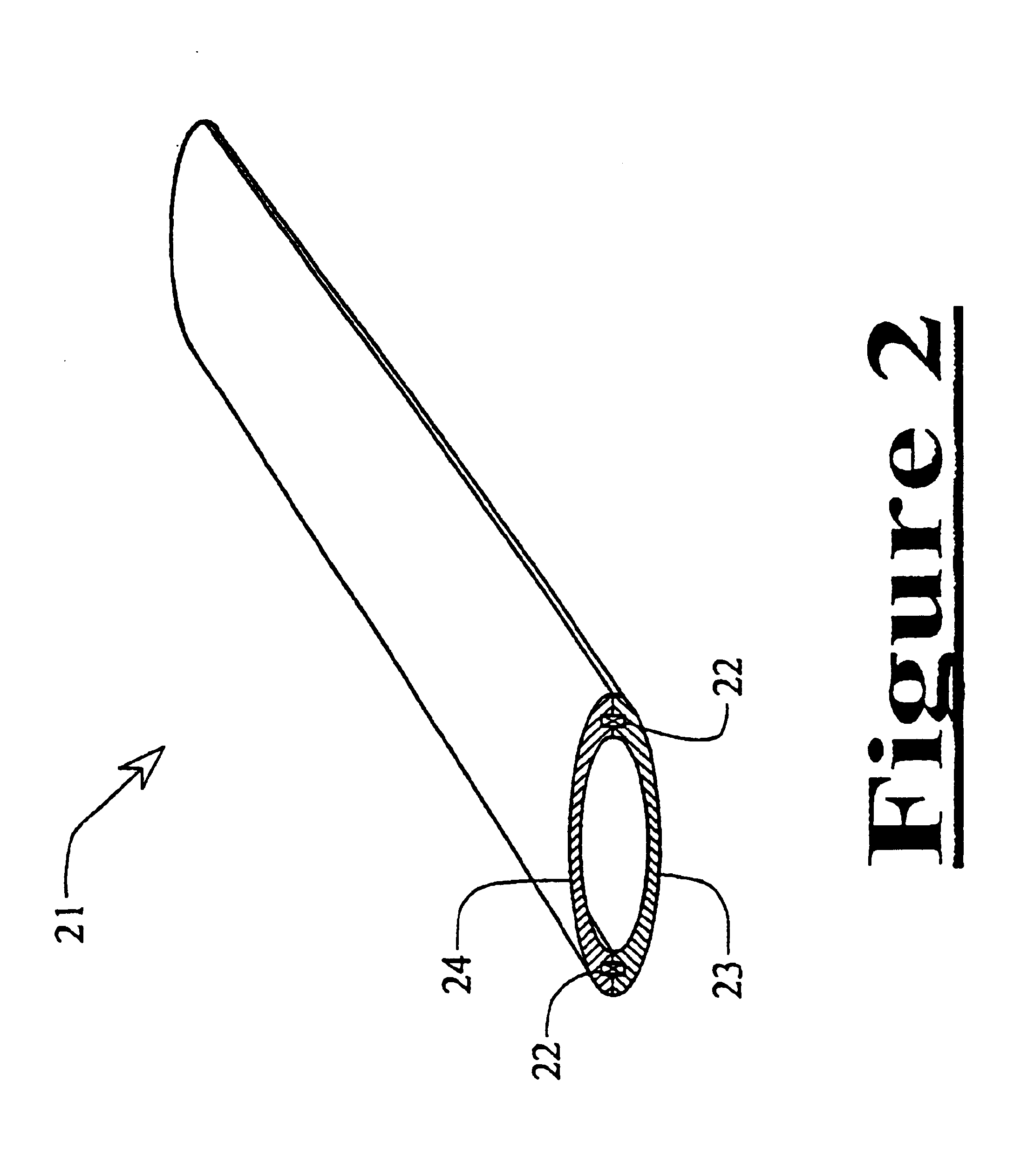Triangulated bicycle pedal support structure
a pedal support and triangular technology, applied in the field of triangular bicycle pedal support structures, can solve the problems of multiple structural segments and inherent structural efficiency, and achieve the effect of reducing high bending stress
- Summary
- Abstract
- Description
- Claims
- Application Information
AI Technical Summary
Benefits of technology
Problems solved by technology
Method used
Image
Examples
Embodiment Construction
[0018]FIG. 1 discloses a structure 1 for rotatively connecting the pedal of a bicycle to the spindle of a bicycle. Structure 1 comprises a hub 6 which includes an opening 5 to receive the end of a spindle, which rotates on an axis 2. Hub 6 further includes internal threading 8 recessed from its outer face for the purpose of securing a threaded cap which can cover the outer opening of the hub. According to one preferred embodiment of this invention structure 1 comprises two struts, preferably a first connection strut 10 and a second connection strut 16, attached to hub 6, which extend radially away from the center of hub 6, preferably at an attachment angle 84 of less than 200° and optimally less than 180°. While these struts 10, 16 are generally round and hollow in the preferred embodiment, they may be of any cross sectional profile, including rectangular, round, elliptical, “C” or “D” or “I beam” shaped, etc. First connection strut 10 and second connection strut 16 may or may not t...
PUM
 Login to View More
Login to View More Abstract
Description
Claims
Application Information
 Login to View More
Login to View More - R&D
- Intellectual Property
- Life Sciences
- Materials
- Tech Scout
- Unparalleled Data Quality
- Higher Quality Content
- 60% Fewer Hallucinations
Browse by: Latest US Patents, China's latest patents, Technical Efficacy Thesaurus, Application Domain, Technology Topic, Popular Technical Reports.
© 2025 PatSnap. All rights reserved.Legal|Privacy policy|Modern Slavery Act Transparency Statement|Sitemap|About US| Contact US: help@patsnap.com



